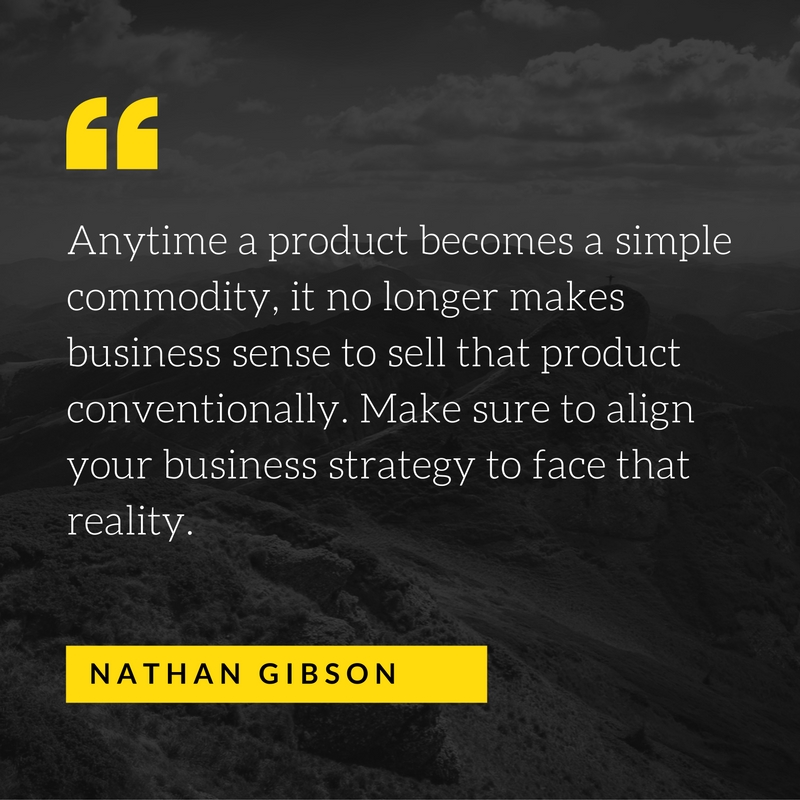By Nathan Gibson
Generation Next Governor at Large
Canfield Equipment Service, Inc.
This article was originally published in the August 2016 issue of Generation Next Edition.
The increased power of the Internet and e-commerce may start to make small brick-and-mortar distributors seem irrelevant, but the broader retail industry can provide all of us with a lesson.
Here are several key concerns from the upfitter perspective:
MAP pricing structures
Most equipment manufacturers use a Manufacturer’s Suggested Retail Price (MSRP) or a list price for their products. Distributors generally purchase from OEMs at a certain percentage off of the MSRP. E-commerce is now forcing manufacturers to have Minimum Advertised Price (MAP) rules and agreements. The rationale behind having a MAP agreement is easy enough to understand – you want to prevent the market value of your products from bottoming out.
Instead of creating a “race to the bottom” pricing strategy among distributors, there is now a set floor. The reality is that MAP pricing and set price floors become the new MSRP for your products. MSRP is supposed to represent the dollar amount for which you should expect to sell a product.
Everyone can relate to this on a personal level. Let’s say you want to buy a new washing machine. Since you haven’t bought one in a while, you don’t know how much they cost. A quick
search online shows the machine you want is for sale on website x for $600 (MSRP is $900, but wait – a red line going through that price indicates it’s on sale at MAP pricing for $600!). You go to the nearest store and see they have that model for sale at $695. You show them the price you found online, and they either match the price or you just buy it online and the store loses the sale.
Similarly, you should not expect to be able to sell the products you distribute, that are available online, at a higher price without a fight. Just as distributors compete with each other with lower prices, so too do manufacturers, and the internet is the main downward price driver.
Impacts to distributor margins
In areas with a lot of upfitter competition, pricing is likely already competitive. Smaller distributors without much competition, and distributors located in more rural locations, probably rely on larger margins to compensate inventory carrying costs in a low volume market.
Can you compete with e-commerce? Generally, brick-and-mortar shops should be able to get a better margin on products to cover the cash they put out to have products on their shelves. Today, it’s an “I want it now” world. With free two-day shipping, do enough of your customers need the products you stock TODAY, or are they willing to wait two days to save money? The most obvious example of when customers need product NOW, is for snow plow repair. A snow plow driver cannot wait two days to get the plow repaired; the snow may have melted by that time.
E-commerce is not dependent on geography. You may be in Utah and losing sales to an e-store in Delaware. Your regional competition is no longer regional – it’s universal. The e-store in Delaware may or may not even have to charge Utah sales tax, depending on how tax laws play out. A person living in their parents’ basement with a laptop can now sell the same products as you do without having to pay rent, payroll, insurance, HR, etc.
It’s not all doom and gloom, however. The first lesson I learned about this industry is that it is a “relationship industry.”
This article is a call to fight complacency in your sales efforts. The most effective defense against “commoditization” in the work truck industry is to make sure your customers buy from you. Prove to your customers that you can personally come up with solutions for their business, and that you can provide services that a webpage simply cannot. The true advantage of brick-and-mortar is not proximity of products, but the trust, reliability, responsiveness (and potentially a comped business lunch now and again) you provide.
This article is not intended to be advocacy or rebuttal of MAP pricing, nor is it anti e-store. Hopefully, you find it to be a thought-provoking piece about how something as commonplace as the internet could be used to help or hurt your business.
Learn more about Generation Next.